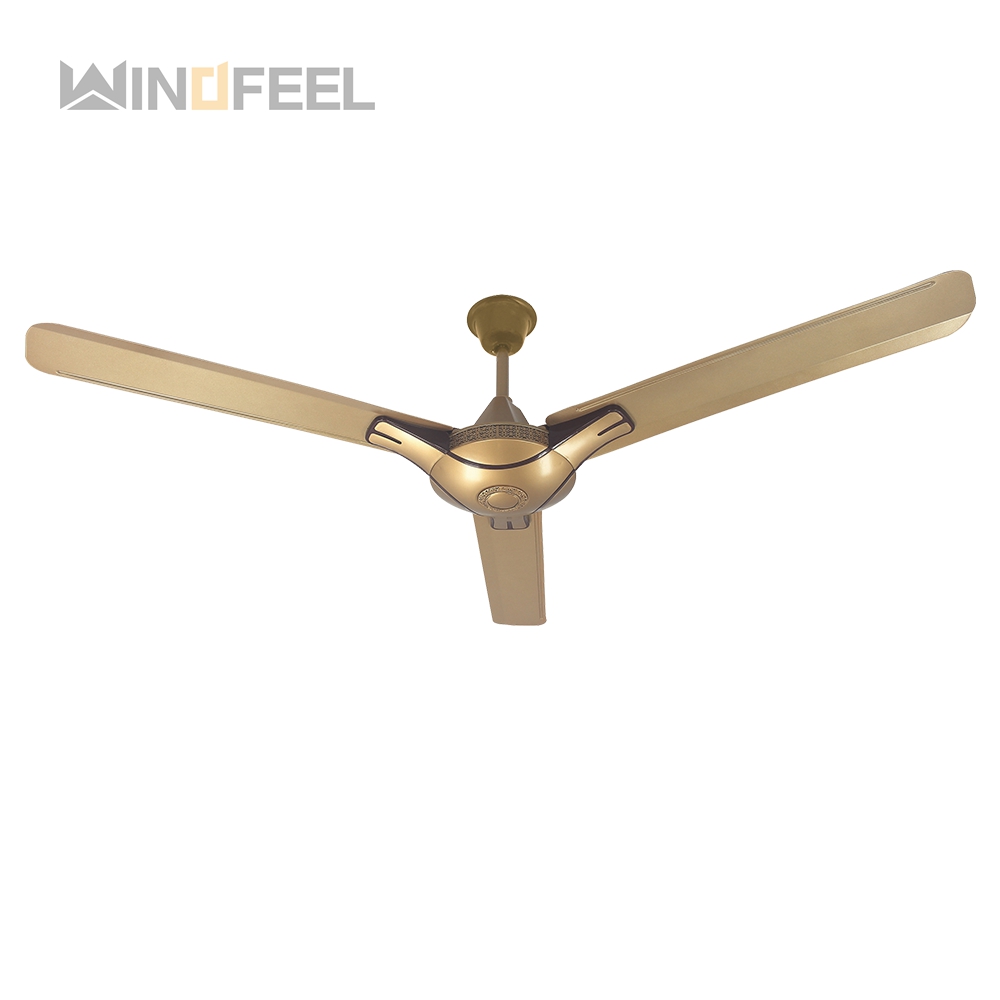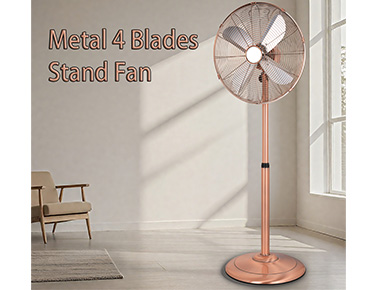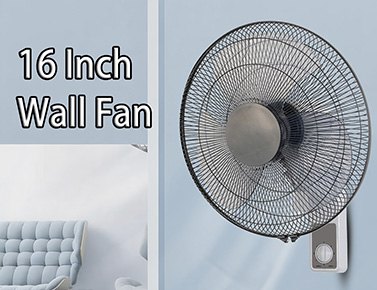1.What is an Electric Fan
An electric fan, commonly referred to as a fan, is a household appliance that uses an electric motor to rotate blades, thereby accelerating air circulation for the purpose of cooling and ventilating. It is widely used in homes, classrooms, offices, shops, hospitals, and hotels, among other places. A fan mainly consists of a fan head, blades, a guard, and control devices. The fan head includes the electric motor, front and rear covers, and an oscillating mechanism. The primary component of an electric fan is the AC motor. Its working principle is that a powered coil turns when acted upon by a force within a magnetic field. Electrical energy is converted into mechanical energy, and due to the resistance of the coil, a portion of the electrical energy is inevitably converted into heat energy.
2.The Working Principle of Fans
The main component of an electric fan is the AC electric motor. Its working principle is that when the coil is energized, it rotates in a magnetic field.
Electrical energy is converted into mechanical energy, but due to the coil's resistance, a portion of the electrical energy is inevitably converted into heat energy.
In addition, low-power motors such as DC motors and brushless DC motors are increasingly used in small fans.
When an electric fan operates (assuming no heat transfer between the room and the outside world),
the indoor temperature not only does not decrease but actually increases. Let's analyze the reasons for this temperature rise: when the electric fan is running,
current flows through the fan's coil, and since wires have resistance, heat is inevitably generated and released outward, causing the temperature to rise.
Why then do people feel cool? This is because the human body's skin has a lot of sweat, and when the fan operates, the indoor air circulates,
which promotes rapid evaporation of sweat. Since evaporation requires absorbing a lot of heat, people feel cool as a result.
3.Types of Electric Fans
Classified by the motor structure, electric fans can be divided into: single-phase capacitor type, single-phase shaded pole type, three-phase induction type, DC and AC/DC hybrid series-excited commutator type fans.
Classified by their purpose, electric fans can be categorized as household fans and industrial exhaust fans.
Household fans: include ceiling fans, table fans, pedestal floor fans, wall fans, attic fans, exhaust fans, oscillating fans, and air conditioning fans (also known as cooling fans). Table fans can further be categorized into oscillating and non-oscillating types, and there are also oscillating options for pedestal fans. Additionally, there is a type of gentle breeze fan designed to hang inside a mosquito net, providing a gentle breeze during summer nights for a peaceful sleep without falling ill.
4.Pros and Cons of Household Electric Fans
(1)floor stand fan
The most common type of electric fan, the base is fixed with a base stand, a support rod elevates the height, and it connects to the motor and fan blades. These fans can also be adjustable into table fans nowadays, with remote control and various smart functions, making them more user-friendly and suitable for a wider range of applications, with prices ranging from as low as a hundred to as high as a thousand dollars.
Pros: Generates strong airflow, suitable for larger rooms, with a wide range of oscillation angles to cover as much area as possible.
Cons: Relatively heavy and not easily portable, takes up significant space.
(2)Oscillating Blade Fan
The motor of an oscillating blade fan is relatively small, almost flush with the fan blades, making the overall size only slightly larger than the blades themselves. The fan adjusts the airflow direction by rotating the front grille in front of the blades.
Pros: Lightweight and agile, easy to move and suitable for 1-2 people. Provides gentle airflow, ideal for use by the elderly and children.
Cons: Airflow range is limited and not suitable for use in large spaces.
(3)Ceiling Fan
Ceiling fans were quite popular in the 80s and 90s, found in homes and schools almost everywhere. Typically suspended from the ceiling, they rotate via a central axis and usually have multiple blades.
Pros: Ceiling fans move in a circular motion, covering the entire room, and the metal blades provide strong airflow.
Cons: If not used for a while, dust can accumulate on the blades, requiring cleaning before use. Additionally, the metal blades can produce some noise when in motion.
(4)Tower Fan
Tower fans operate by rotating internal fan blades to release airflow through a vent, similar to the principle of an air conditioner's internal unit.
Pros: Space-efficient, stylish design, but moderate airflow, suitable for small living spaces. Moderately priced, suitable for the average household.
Cons: Slightly noisy, challenging to clean dust. Due to most tower fans not being very tall and lacking the ability to adjust the angle vertically, the airflow tends to be low and may direct air towards the legs.
(5)Air Conditioning Fan
An air conditioning fan is a new concept combining air circulation, air conditioning principles for cooling, heating, air purification, humidification, all in one unit. It uses water as a medium to provide air equivalent to water temperature quickly, offering both cooling and heating functions.
Pros: Compared to traditional fans, the air conditioning fan has added humidifying capabilities. However, it consumes much more power, around 60-80W, compared to traditional fans but less than traditional air conditioners. It is also very competitively priced.
Cons: It does not cool the air on its own and requires continuous input of water at the desired temperature to provide the required airflow, making it somewhat inconvenient to use.
(6)Bladeless Fan
The bladeless fan was initially invented by Dyson, known for its bladeless design. In reality, there is a turbine at the base that sucks in air and sends it out through a hollow circular ring, utilizing gaps in the ring to create airflow. The circular ring of the air multiplier has a cross-section similar to an airplane wing, leveraging the Coanda Effect and the same effect as wing lift to increase airflow.
Advantages: Produces a natural and continuous cool breeze, without blades, preventing dust accumulation and potential injury to children inserting fingers. Its unique design is both streamlined and refreshing in appearance.
Disadvantages: Due to patent issues, market demand varies. Some budget-friendly options catered to the lower end of the market may have high noise levels, high energy consumption, and poor quality. However, our Windfeel air cooling fans include high-quality options tailored for the African and South American markets, featuring good quality, low energy consumption, and silent operation, equipped with pure copper motors for an extended lifespan.






